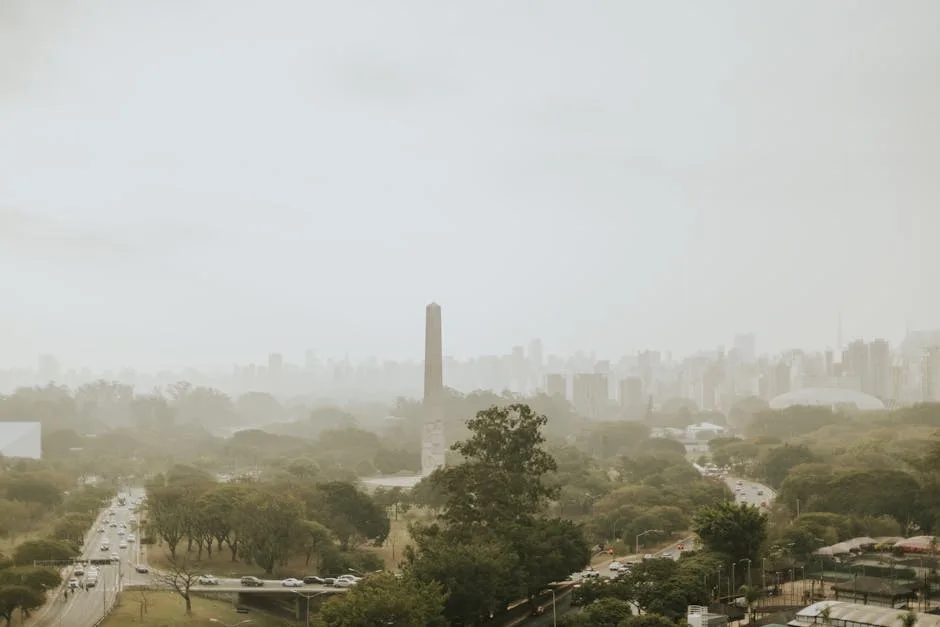- Are You Ready for Brazil in 2026? It's Not What You Expect.
- The New "It" Destinations: Beyond the Postcard Views
- Lençóis Maranhenses & The Route of Emotions
- Alagoas & The "Miracle Route"
- Green is the New Gold: Eco-Conscious Journeys
- The Amazon, Reimagined
- The Pantanal's Wildlife Renaissance
- Your Smartphone is Your Best Friend: Tech in the Tropics
- The Power of Pix
- Staying Connected from the Beach to the Jungle
- Trading Hustle for Hammocks: The Rise of Slow Travel
- Bahia's Soulful Retreats
- A Feast for the Senses: Brazil's Culinary Revolution
- From Açaí Bowls to Moqueca
- Navigating with Confidence: Practical Tips for 2026
- Getting Around the Country
- Safety Smarts in the Cities
Are You Ready for Brazil in 2026? It’s Not What You Expect.
Hey there, fellow traveler! If you’re dreaming of a trip that’s more than just a check on a bucket list, let’s talk about brazil. You might have an image in your head—Carnival in Rio, the sprawling Amazon, the iconic Christ the Redeemer statue. And while those are all incredible, the Brazil that awaits you in 2026 is so much deeper, more diverse, and more exciting than ever before. The travel landscape here is shifting, evolving into something more sustainable, authentic, and incredibly rewarding for the American tourist willing to look beyond the obvious. Forget the old clichés; let’s dive into the trends that are shaping the future of travel in this vibrant South American giant.
The New “It” Destinations: Beyond the Postcard Views
For years, the Brazil itinerary for most Americans was a simple one: Rio de Janeiro and maybe a quick stop at Iguazu Falls. But by 2026, savvy travelers are pushing the boundaries and discovering that Brazil’s real magic often lies in its lesser-known corners. The spotlight is turning dramatically towards the Northeast, a region of unparalleled natural beauty, rich Afro-Brazilian culture, and a pace of life that forces you to slow down and savor every moment.
Lençóis Maranhenses & The Route of Emotions
Imagine walking across what looks like a desert of endless, rolling white sand dunes, only to find crystal-clear, freshwater lagoons nestled between them. This isn’t a mirage; it’s Lençóis Maranhenses National Park in the state of Maranhão. This surreal landscape is the star of the “Rota das Emoções” (Route of Emotions), an adventure route that connects this natural wonder with the wildlife-rich Parnaíba Delta and the kitesurfing paradise of Jericoacoara. In 2026, this won’t be a fringe backpacker trip anymore. Expect more comfortable 4×4 tours, charming pousadas (guesthouses), and a focus on community-based tourism that ensures your visit supports the local villages.
Alagoas & The “Miracle Route”
Looking for those postcard-perfect Brazilian beaches without the crowds of Copacabana? Welcome to the Rota Ecológica dos Milagres (Ecological Miracle Route) in the state of Alagoas. This stretch of coastline is protected by the second-largest barrier reef in the world, creating calm, turquoise waters and beaches lined with coconut palms. The trend here is all about boutique, eco-conscious “pousadas de charme” that blend luxury with local character. It’s the kind of place you go to disconnect from your phone and reconnect with nature, enjoying fresh seafood on the beach and exploring natural tide pools called “piscinas naturais.”
Green is the New Gold: Eco-Conscious Journeys
The global shift towards responsible travel has found a powerful home in Brazil, a country that stewards some of the planet’s most vital ecosystems. In 2026, a trip to Brazil is an opportunity to be part of the solution. Travelers are actively seeking out experiences that contribute to conservation and empower local communities.
The Amazon, Reimagined
The Amazon experience is evolving far beyond a simple jungle trek. The trend is moving towards high-quality, low-impact eco-lodges that serve as bases for incredible wildlife spotting and cultural immersion. Think less “survival challenge” and more about learning from indigenous guides, understanding the complex ecosystem, and contributing to scientific research or reforestation projects. These trips offer a deeper connection, where you leave with not just photos, but a profound appreciation for the “lungs of the world.”
The Pantanal’s Wildlife Renaissance
If seeing big wildlife is on your list, the Pantanal is where you need to be. As the world’s largest tropical wetland, it’s one of the best places on the continent to spot jaguars in their natural habitat. By 2026, the “jaguar safari” trend will be in full swing, with experienced guides leading expeditions that prioritize the animals’ welfare. The focus is on conservation-led tourism, where your stay at a traditional “fazenda” (ranch) or eco-lodge directly supports efforts to protect this incredible, biodiverse landscape. It’s an unforgettable, raw, and wild experience.

Your Smartphone is Your Best Friend: Tech in the Tropics
While Brazil offers countless opportunities to disconnect, staying connected has never been easier or more useful. The country has made significant technological leaps, making travel smoother and more integrated for the modern tourist.
The Power of Pix
Get ready to hear this word a lot: Pix. It’s Brazil’s instant payment system, and it has completely revolutionized transactions. From a street vendor selling fresh coconut water to a high-end restaurant, nearly everyone accepts Pix. For tourists, this means less reliance on cash and fewer international card fees. While you’ll still need your card, setting up an account with a digital bank that offers Pix access can be a game-changer for daily expenses in 2026.
Staying Connected from the Beach to the Jungle
Gone are the days of searching desperately for a weak Wi-Fi signal. Brazil’s 5G network continues to expand into more tourist areas, and the availability of affordable eSIMs online before you even leave the US makes staying connected a breeze. This means you can easily use ride-sharing apps, Google Translate, and Maps, even in places that once felt very remote.
Trading Hustle for Hammocks: The Rise of Slow Travel
The whirlwind, five-cities-in-seven-days trip is out. The 2026 trend is all about “slow travel”—spending more time in one place to truly absorb the culture, connect with people, and recharge. Brazil is the perfect destination for this mindset.
Bahia’s Soulful Retreats
The state of Bahia, the heart of Afro-Brazilian culture, is the epicenter of this movement. Imagine a week in a quiet beach town like Trancoso or Itacaré, starting your days with a yoga session, learning the basics of capoeira in the afternoon, and enjoying live bossa nova music at night. It’s about finding a rhythm, not just following an itinerary. Wellness is no longer just a spa day; it’s woven into the entire experience.
A Feast for the Senses: Brazil’s Culinary Revolution
Brazilian food is so much more than steak and caipirinhas! The country’s culinary scene is finally getting the global recognition it deserves, and food is becoming a primary reason for people to visit. In 2026, you’re not just eating to refuel; you’re exploring Brazil’s history and diversity through its flavors.
From Açaí Bowls to Moqueca
Each region has its own distinct culinary identity. In the Amazon, you’ll try exotic fruits like cupuaçu and taste fish prepared in ways you’ve never imagined. In Minas Gerais, you’ll indulge in hearty stews and the famous pão de queijo (cheese bread). And in Bahia, you absolutely must try moqueca, a rich seafood stew cooked in coconut milk and dendê (palm) oil. Food tours, cooking classes, and visits to local markets are becoming essential parts of the Brazilian travel experience.

Navigating with Confidence: Practical Tips for 2026
Let’s be real: planning a trip to a country as vast as Brazil can feel a bit daunting. But with a little knowledge, you can navigate it like a pro. The infrastructure for tourism is better than ever, making it more accessible for American visitors.
Getting Around the Country
Brazil is huge—larger than the contiguous United States. This means domestic flights are your best friend for covering long distances between regions. Brazil’s budget airlines have expanded their routes, making it more affordable to hop from Salvador to Manaus. For shorter regional trips, don’t overlook the luxury long-distance buses (called “leitos”), which are surprisingly comfortable, with fully reclining seats that can save you the cost of a night’s accommodation.
Safety Smarts in the Cities
Just like in any major American city, it’s important to be aware of your surroundings in Brazil’s urban centers. The key is to be smart, not scared. Leave the flashy jewelry at home, be mindful of your phone in crowded areas, and use ride-sharing apps like Uber at night instead of hailing cabs on the street. Stick to well-lit, populated areas, and always trust your gut. And of course, comprehensive travel insurance is non-negotiable for peace of mind.




